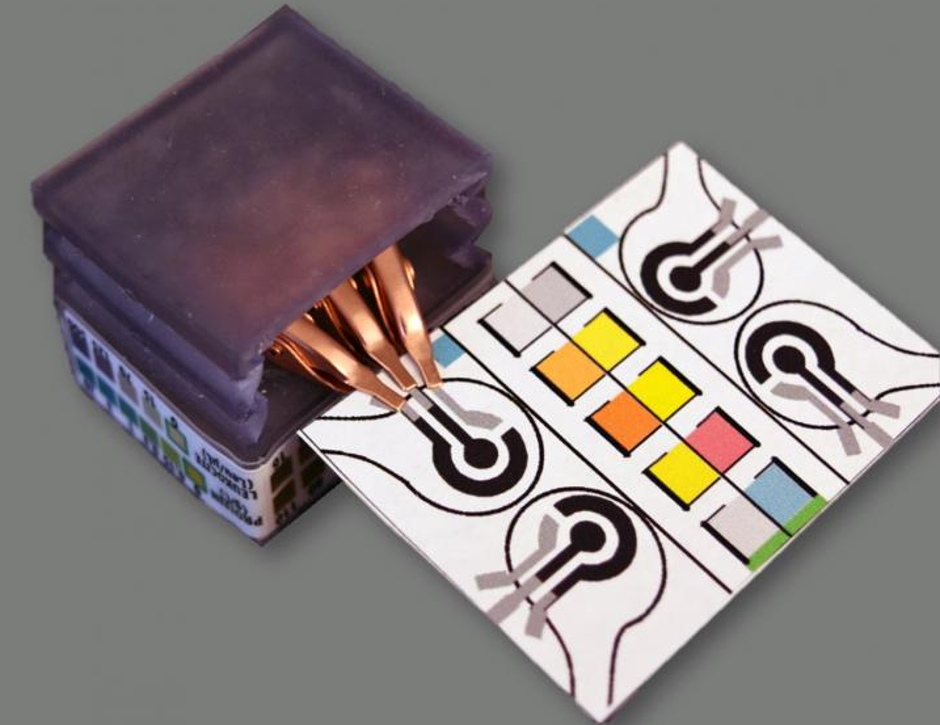
The new device is said to detect biomarkers and identify diseases by performing electrochemical analyses - powered only by the user's touch - and reads out the colour-coded test results, making it easy for non-experts to understand.
"You could consider this a portable laboratory that is just completely made out of paper, is inexpensive and can be disposed of through incineration," said Ramses V. Martinez, an assistant professor of industrial and biomedical engineering at Purdue University. "We hope these devices will serve untrained people located in remote villages or military bases to test for a variety of diseases without requiring any source of electricity, clean water, or additional equipment."
According to Martinez, the so-called SPEDs (Self-powered, Paper-based Electrochemical Devices) are inexpensive, lightweight, flexible and easy to use. Research findings are detailed in Advanced Materials Technologies.
According to Purdue, the test is initiated by placing a pinprick of blood in a circular feature on the device, which is less than two-inches square. SPEDs also contain self-pipetting test zones that can be dipped into a sample instead of using a finger-prick test.
The top layer of the SPED is said to be fabricated using untreated cellulose paper with patterned hydrophobic domains that define channels that wick up blood samples for testing.
These microfluidic channels allow for accurate assays that change colour to indicate specific testing results. A machine-vision diagnostics application also was created to automatically identify and quantify each of these colorimetric tests from a digital image of the SPED, potentially taken with a smartphone, to provide fast diagnostic results to the user and enable remote-expert consultation.
The bottom layer of the SPED is a triboelectric generator (TEG), which generates the electric current necessary to run the diagnostic test by rubbing or pressing it.
The researchers also designed an inexpensive potentiostat, which is plugged into the SPED to automate the diagnostic tests so that they can be performed by untrained users. The battery powering the potentiostat can be recharged using the TEG built into the SPEDs.
"To our knowledge, this work reports the first self-powered, paper-based devices capable of performing rapid, accurate, and sensitive electrochemical assays in combination with a low-cost, portable potentiostat that can be recharged using a paper-based TEG," Martinez said.
SPEDs are reportedly compatible with mass-printing technologies, such as roll-to-roll printing or spray deposition. They can perform multiplexed analyses enabling the highly sensitive and accurate detection of various targets for a range of point-of-care testing applications. They can also be used to power other electronic devices to facilitate telemedicine applications in resource-limited settings.
The SPEDs were used to detect biomarkers including glucose, uric acid and L-lactate, ketones, and white blood cells, which indicate factors related to liver and kidney function, malnutrition and anemia.
Future versions of the diagnostics technology will contain several additional layers for more complex assays to detect diseases such as dengue fever, yellow fever, malaria, HIV and hepatitis, Martinez said.




Red Bull makes hydrogen fuel cell play with AVL
Formula 1 is an anachronistic anomaly where its only cutting edge is in engine development. The rules prohibit any real innovation and there would be...